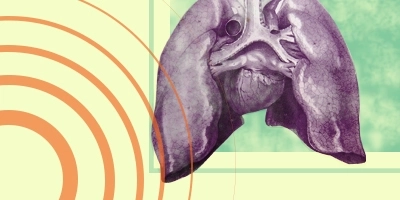
By Dr. Kelly O'Connell
Typically in ultrasound applications, we always say that ultrasound has two barriers: bone and air. This is because when an ultrasound beam travels through tissue, it experiences reflection (echo), refractions and attenuation. In the case of lung, when ultrasound hits the pleura-air boundary, almost all the sound waves are reflected back leaving none left to travel through the lung. In healthy animals and patients, the sound wave essentially “bounces” back to the ultrasound probe in reverberations producing regularly spaced white horizontal arcs under the pleura-lung boundary called A-lines. When the air content of the lungs decreases and the density increases, as with increased extravascular lung water (EVLW), sound waves begin to penetrate deeper into the tissue producing vertical reverberations that start at the pleural line and do not fade with depth, called B-lines.
Lung ultrasound has been successfully incorporated in the clinical setting, including the emergency department and the ICU, though its applications in the pre-clinical research realm are still in initial stages. In 2015, Ma et al1 published the first ultrasonic evaluation EVLW in rats using the Vevo2100 system. Using a model of oleic acid venous infusion to cause acute lung injury (ALI), rats were anesthetized and ultrasound was performed on the lungs in the prone position. All results were compared to saline-infused control animals.
To standardize the technique between operators, a modified 28-rib space technique from the clinical setting was used. Lung scanning was performed in the vertical plane in 4 dorsal zones with 5-6 intercostal spaces present in each image. The B-lines score was either counted directly (0-10) or if at confluency, taken as a percentage of the intercostal space divided by 10. The presence of A-lines was given a score of 0 (normal lung finding). Ultrasound data were compared to the current gold standard of measuring EVLW in rodents, gravimetric measurements after euthanasia. Ma et al found that animals with ALI had a significantly greater B-lines score compared to controls (15.75 ± 4.90 vs. 1.58 ± 0.79, respectively, p<0.01) and that a comparison of the two methods of assessing EVLW provided an r value of 0.834 (p<0.001).
Lung ultrasound in the clinical setting is gaining popularity due to decreased cost, lack of radiation exposure, and increased reliability of diagnosis. Ma et al have now adapted this technique for animal models and have described a reliable and feasible method of assessing acute lung injury in rats showing us that the emerging research field of lung ultrasound is not just full of hot air.
1. Ma H, Huang D, Zhang M, Huang X, Ma S, Mao S, Li W, Chen Y, Guo L. Lung ultrasound is a reliable method for evaluating lung water volume in rodents. BMC Anesthesiology (2015) 15:162.